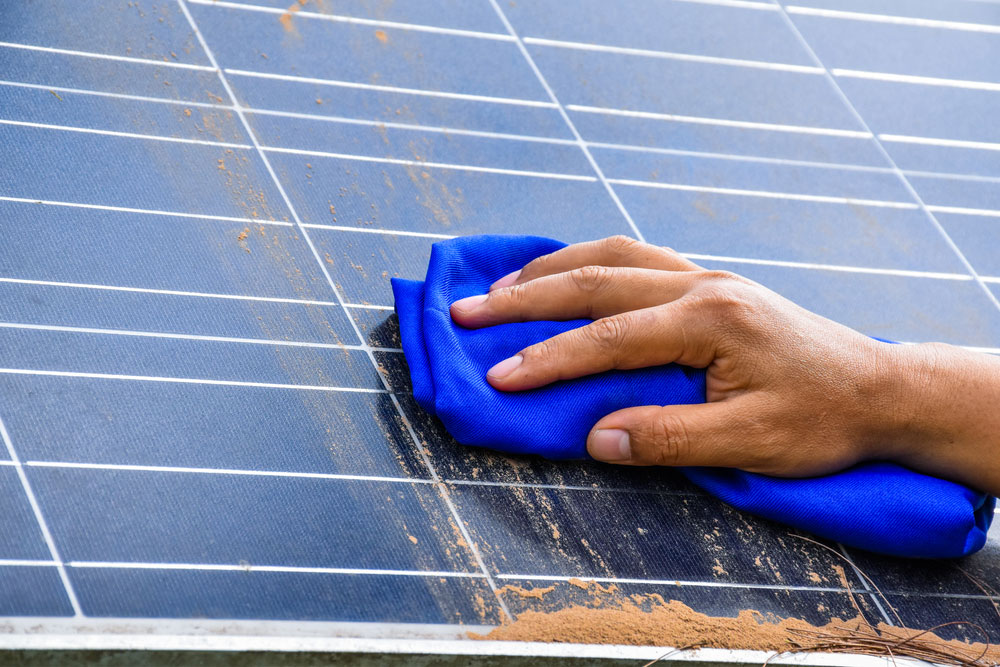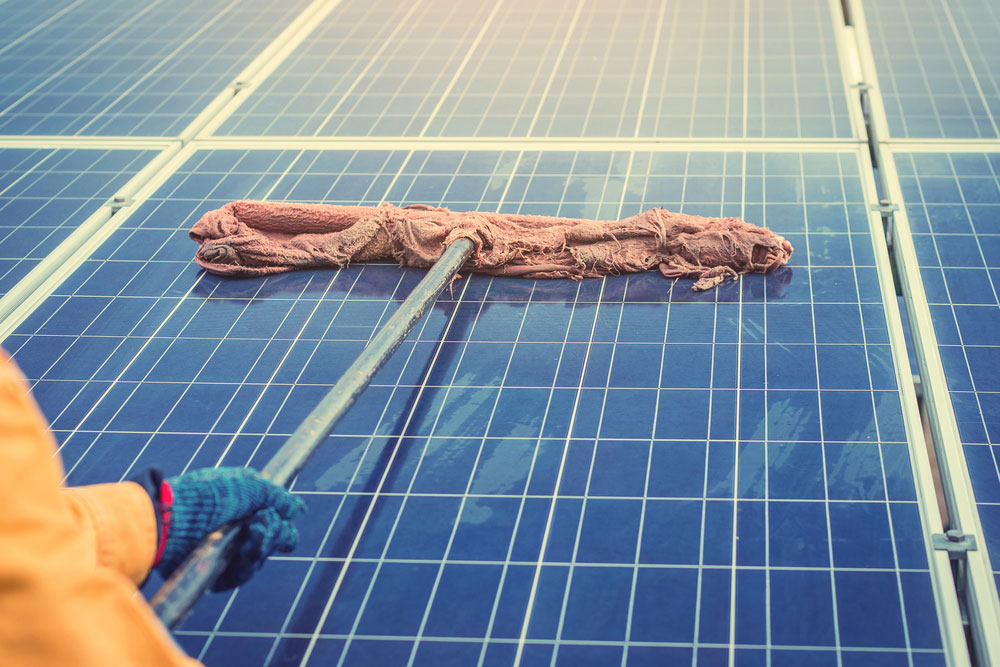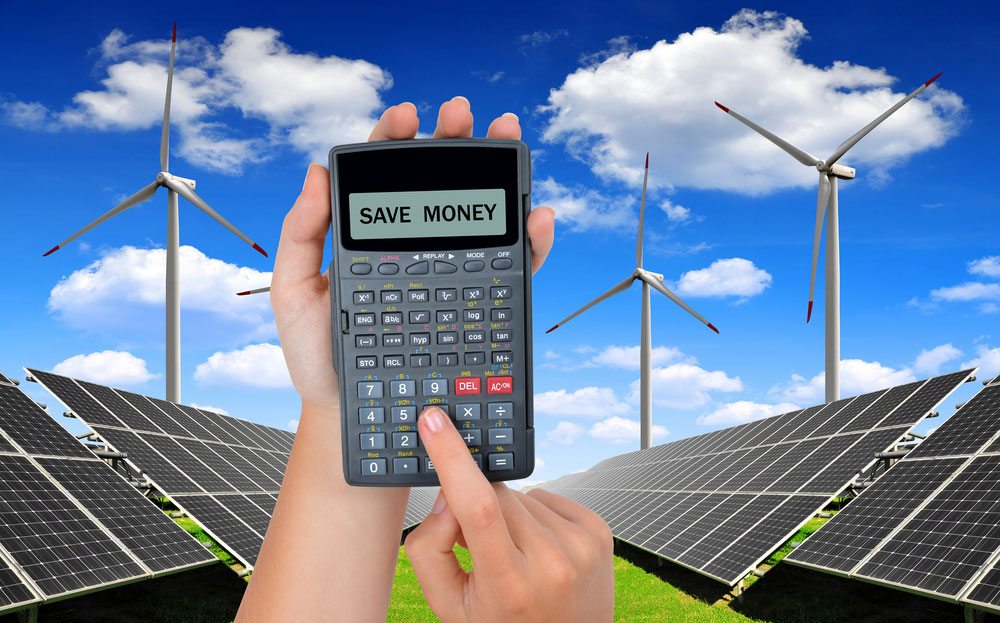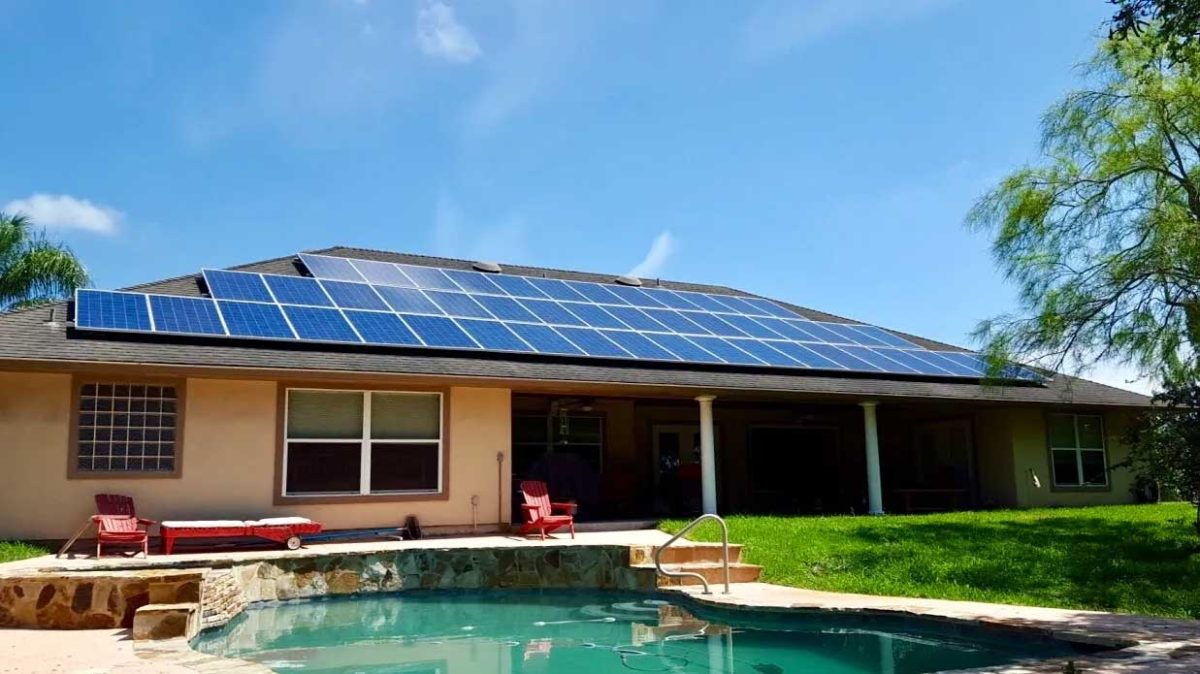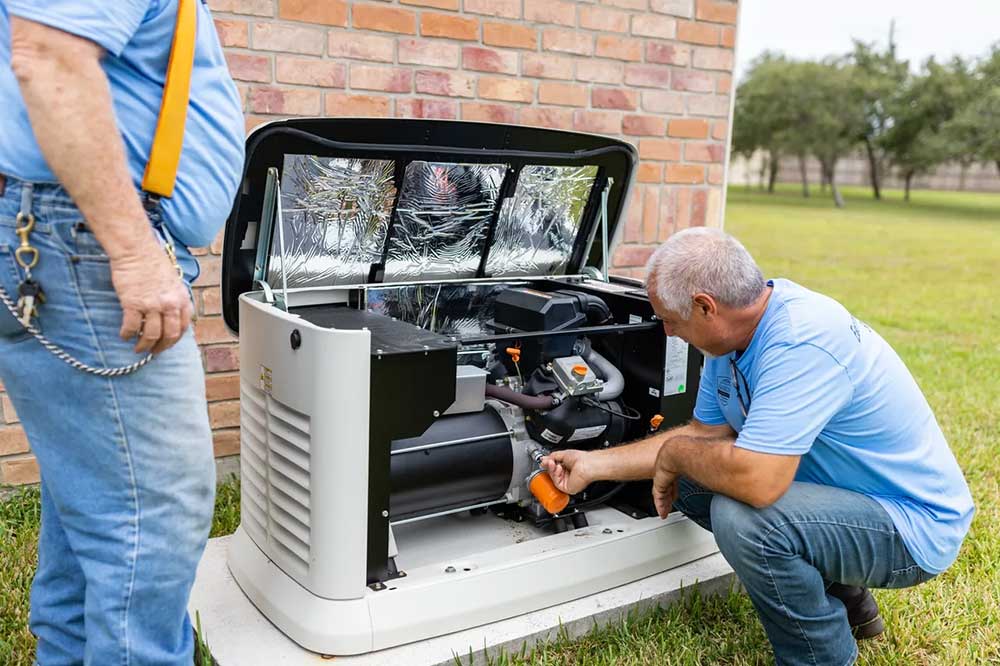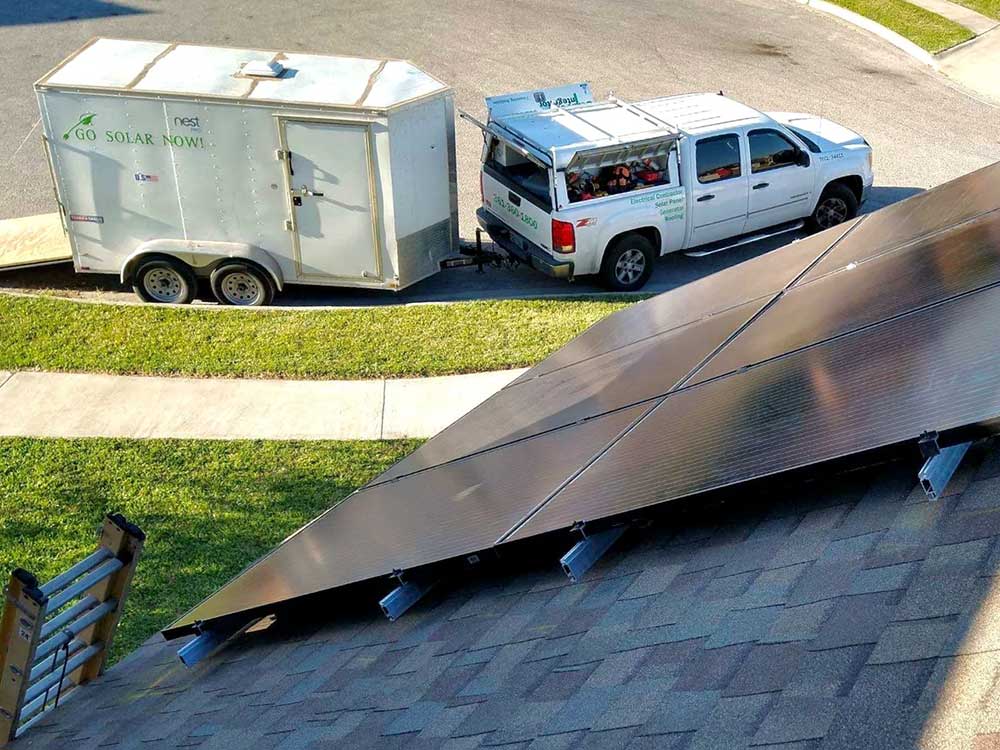Part of being a homeowner is planning for the unexpected. That’s why everyone needs insurance, smoke detectors, and a safety kit for emergencies. Having a generator installed is one more way you can protect yourself in case of a power outage, when everything from food spoilage to uncomfortable temperatures can occur. Power outages can happen at any time and during any season. They can be caused by storms or even the overuse of electrical systems. One windstorm can topple trees, which can damage power lines or even cause the lines themselves to blow down.
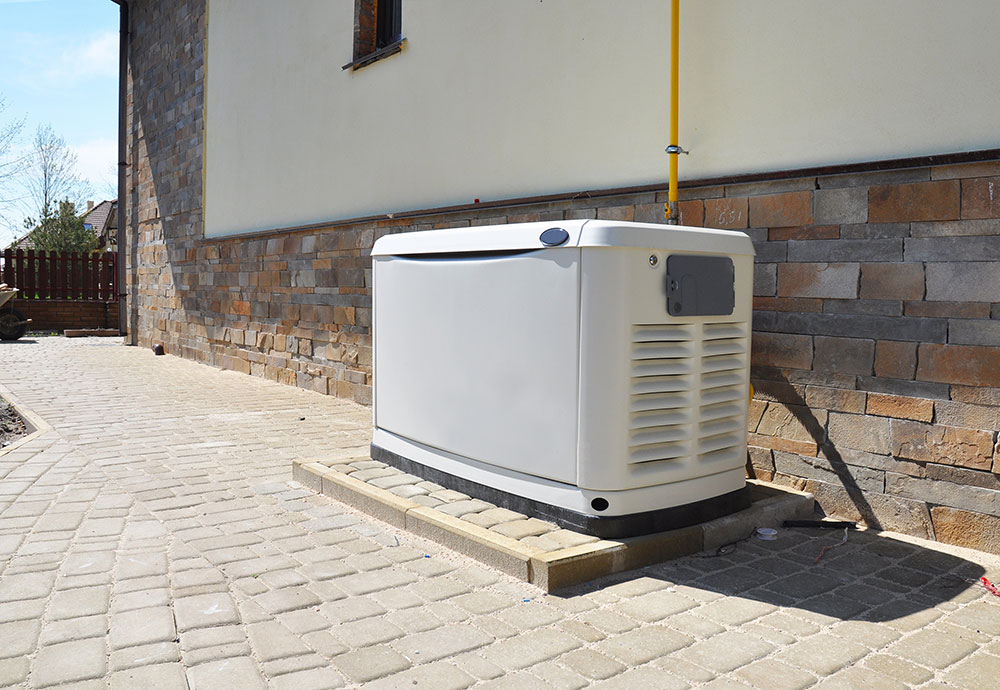
What to Consider When Buying a Generator
A backup generator is an investment. You also need to have the space to store or install one. Here are some things that you should think about as you purchase a generator:
- Where can you store a portable generator?
- Where can you safely store fuel for a generator?
- How many of your appliances are electric?
- Do I need a transfer switch?
A stationary generator is installed and connected to the fuel source, so it can be activated when it’s needed. There’s also no need to store fuel or to refuel the generator while it’s being used.
Benefits of Getting a Backup Generator Installed
A backup generator and its installation are big expenses, but you need to compare it to the cost of a non-functioning security system or HVAC unit during a power outage. Not to mention, the potential losses that can come from the electricity not working as it should. Different terms are used to describe a standby generator. It can also be called a “stationary generator” or “whole house generator,” and it becomes necessary during multi-day power outages.
A standby generator installation can have the following advantages:
- It comes on automatically when the power goes out.
- It makes less noise while it’s in use.
- It’s covered and protected from the elements, so it will work during a rainstorm or when there’s moisture.
- It’s already connected to a fuel line and can run on natural gas or propane.
All of these are reasons to have a standby generator instead of a portable one.
Reasons to Hire a Professional for a Standby Generator Installation
If you want to have that easy transition to backup power during an outage, the proper connections and precautions need to be taken by someone with the right experience. When you’re doing any kind of electrical work, certain types of tools and equipment need to be used (which is something that the average homeowner won’t have lying around in a garage). The installation cost will include the use of all this gear, which the electrician knows how to use properly.
Here are some of the things that electricians will most likely do when they’re installing a generator for a home:
- Install a subpanel if it’s needed.
- Enter the home to install a circuit breaker.
- Relocate existing circuits.
- Install a transfer switch.
There will most likely be a need for other people to pour concrete or perform any other related tasks, so the generator can be installed on a stable and level surface. The electrician will have recommendations for or relationships with people who do this type of work, which can save you the time it would need to do the research yourself.
Safety and Local Codes for Standby Generators
An electrician will know all the latest codes that relate to installing a standby generator in the safest possible manner. Not installing a generator properly can have serious consequences that can threaten both life and property. Some of them can include gas leaks, fire hazards, and even air poisoning inside your home. Your generator should come with a warranty, which is more likely to be honored when the homeowner can show receipts for a professional installation that has been done correctly.
Generator Maintenance and Repairs
Even if a generator hasn’t been used, it will still need regular maintenance to make sure it works properly. And for their safety, many electricians can’t or won’t work on a generator that wasn’t installed by a professional. Even a generator that’s under warranty isn’t exempt from all of its maintenance requirements. So if you get it professionally installed, you’re more likely to find someone who can do the work that’s needed to keep it in good shape.
If you’re looking for a qualified standby generator installer in Corpus Christi, be sure to reach out to Solar Power Integrator. We would be happy to speak with you about your specific needs!


